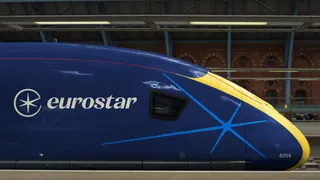Europe is building its own NVIDIA
The new AI Factory in Groningen, backed by €70M each from the EU and the Dutch government, plus €60M from regional funds, is more than a supercomputer.

The new AI Factory in Groningen, backed by €70M each from the EU and the Dutch government, plus €60M from regional funds, is more than a supercomputer.
A €200M AI factory in the Netherlands marks a quiet but significant shift: Europe is moving from chasing innovation to owning the infrastructure that powers it.
It’s easy to forget how much of the world runs on a handful of U.S. and Chinese data centres. Every AI model trained, every app deployed, and every sensor network tuned all flow through foreign compute.
That reliance has been Europe’s quiet weakness. A hidden tax on innovation, made up of costs, compliance hurdles, and geopolitical exposure.
Now, Europe wants out.
The new AI Factory in Groningen, backed by €70M each from the EU and the Dutch government, plus €60M from regional funds, is more than a supercomputer. It’s an act of economic self-determination.
It will serve as an expertise centre, data hub, and high-performance computing facility, providing startups, researchers, and corporates with something Europe has been missing: local, open, and sovereign access to compute.
In the age of AI, that’s not infrastructure. That’s independence.
Europe’s new power play
You can feel a new industrial logic emerging across the continent.
Germany’s JUPITER exascale supercomputer is already partially powered by NVIDIA chips. In France, SiPearl (and CEA-Leti, among others) are advancing Europe’s chip-design efforts through processor R&D and partnerships. Meanwhile, the UK has pledged over £1 billion (plus large sums toward a supercomputer in Edinburgh) to scale up its national compute capacity through its AI Research Resource and compute roadmap.
And behind it all, the EU’s InvestAI initiative is mobilising up to €200B to fund AI gigafactories, infrastructure, and local data centres. Even Google has spotted the shift, announcing a €5B investment in data centres in Belgium, all a clear sign that Europe’s data gravity is increasing.
This isn’t scattered policy noise. It’s a coordinated build-out of a new industrial base, the one defined not by manufacturing or software, but by the availability of compute power.
Why the Netherlands makes perfect sense
On paper, Groningen seems an unlikely place for an AI revolution. But strategically, it’s a bullseye.
The Netherlands already serves as Europe’s digital gateway, with Amsterdam’s AMS-IX among the world's largest internet exchanges, quietly routing much of the continent’s traffic. It also has a strong culture of public–private collaboration through institutions such as TNO, SURF, and the Dutch AI Coalition. These organisations know how to translate big ambitions into practical systems.
And then there’s energy. The Northern Netherlands runs on renewables, with growing capacity in wind and green hydrogen; a crucial edge as the world’s computing hunger collides with climate constraints.
This is what makes the Groningen project symbolic: it’s not just about AI power, but what kind of power fuels AI. Europe aims to demonstrate that building the next generation of intelligence infrastructure is possible without harming the planet.
A new frontier of European venture building
For investors, this signals a shift in where real value is being created.
The next wave of European unicorns might not be model labs or app developers, but the enablers. Companies focused on model efficiency, distributed training, privacy-first data processing, and compute optimisation will be critical. Venture capital is already tilting in this direction, with funds like EQT Ventures, Lakestar, and Moonfire all circling AI infrastructure plays.
For corporate innovation teams, the Groningen AI Factory is a signal to plug in early. The ones who build relationships now (co-developing, testing, or running pilots) will have the inside track when compute becomes the new currency. Access will shape advantage.
What could go wrong?
Of course, ambition doesn’t guarantee delivery.
The first phase (the expertise hub) isn’t expected until 2026, with full operations in 2027. If timelines slip, momentum could fade, and competitors like Germany or Spain might pull ahead. Pricing will be another test. If access to computing remains expensive or bureaucratic, the promise of “democratisation” collapses.
Energy constraints also loom large. AI compute is power-hungry, and while Groningen’s renewable setup helps, scaling sustainably will test even the best-planned grids.
And finally, there’s the quiet competition brewing within Europe itself, nations vying to host their own flagship “AI Factories.” Fragmentation is the enemy of sovereignty.
The bigger picture
What’s unfolding in Groningen isn’t just another tech project, but it’s a new chapter in Europe’s industrial history. When the U.S. built DARPA and Silicon Valley followed, it wasn’t chasing apps. It was building infrastructure. Europe, long content to play by other people’s rules, is finally doing the same.
The Groningen AI Factory may never make headlines like OpenAI or NVIDIA, but that’s the point. Europe’s edge lies in its capacity to build enduring, collaborative systems rather than just hyping machines.
Europe is building its own NVIDIA, not to compete on chips, but to reclaim the power to imagine what comes next.
The question now is: who will build upon it and who will be left renting the future from someone else?


